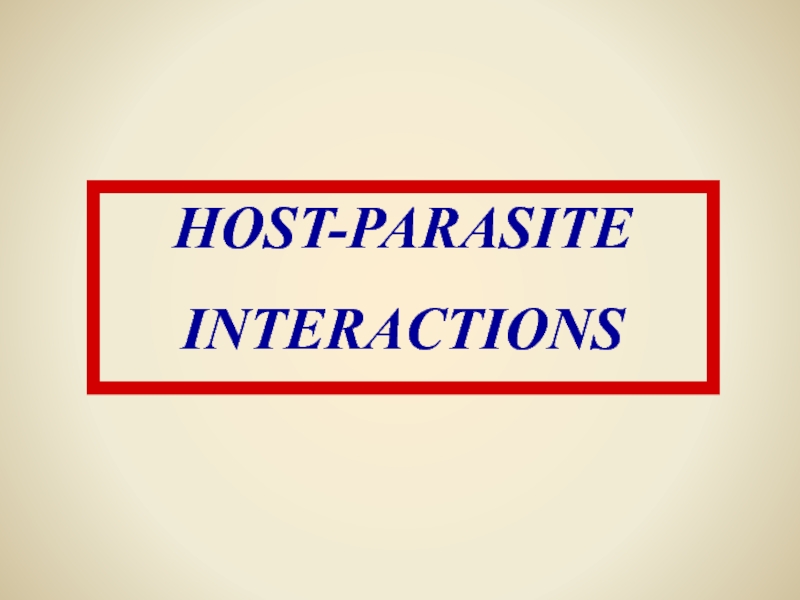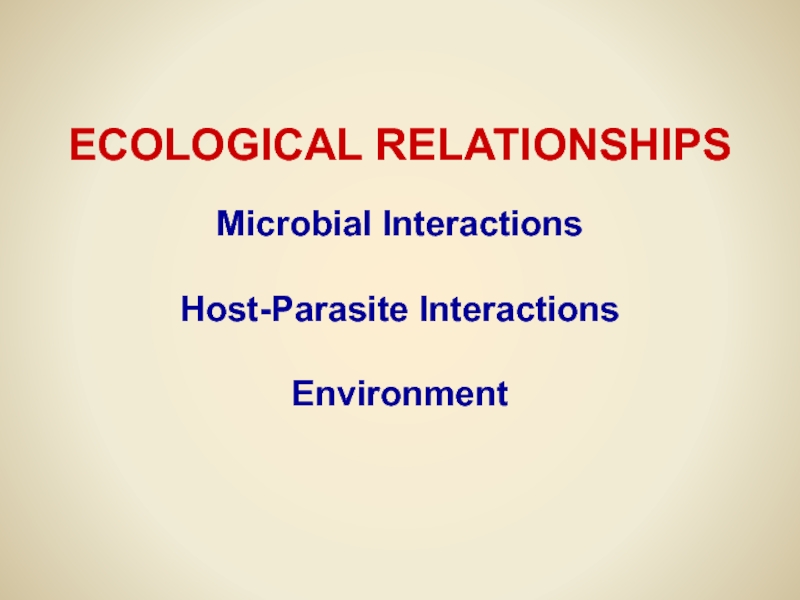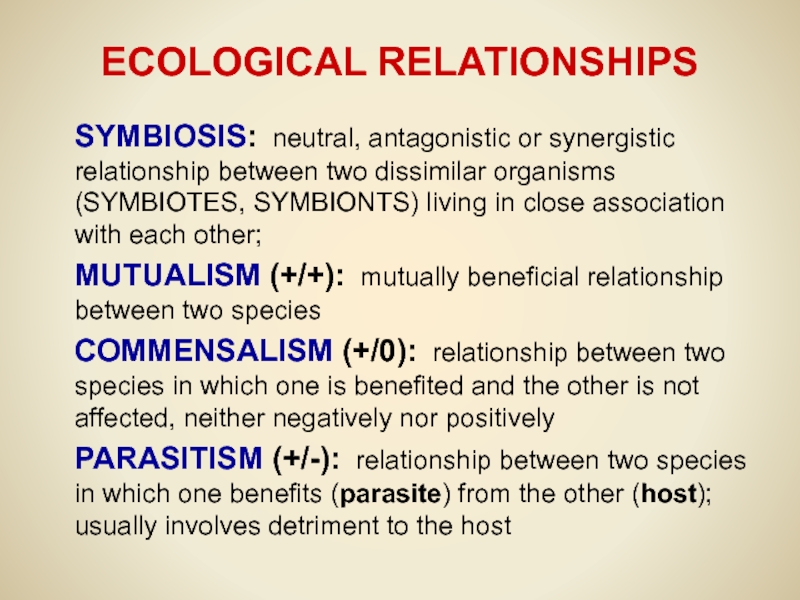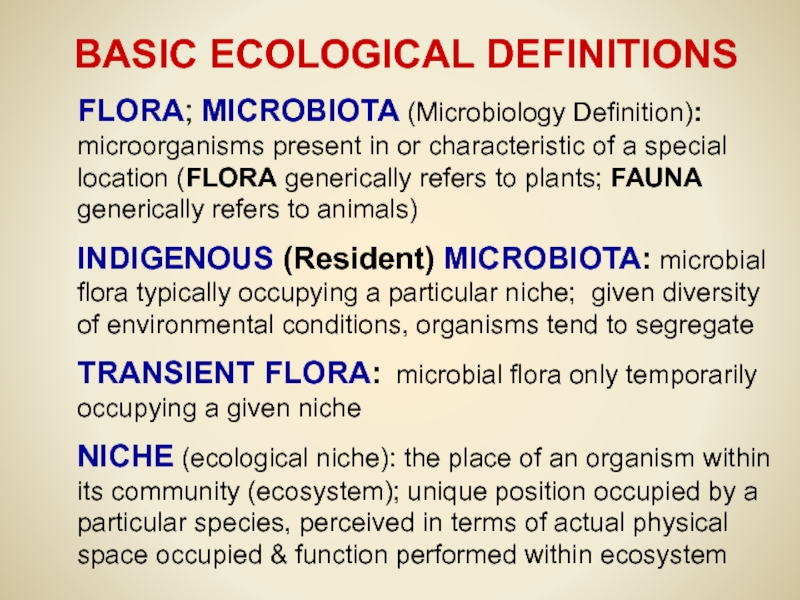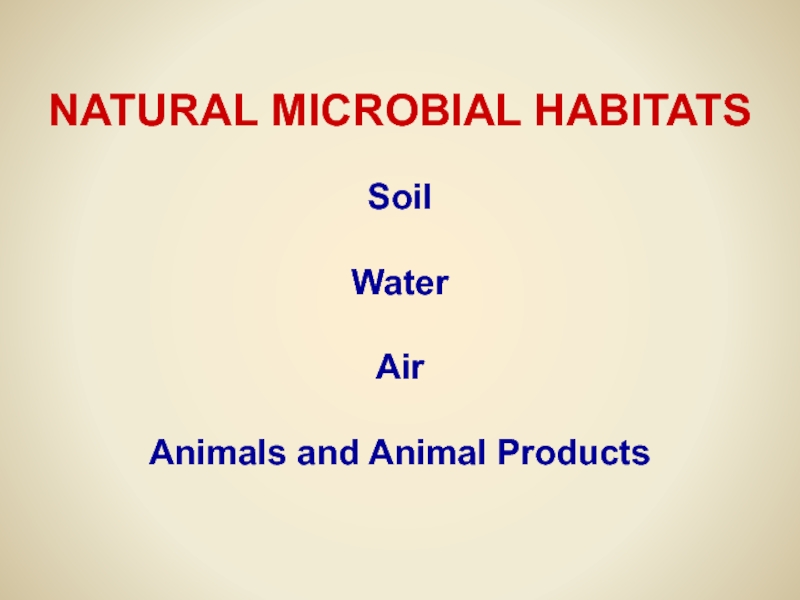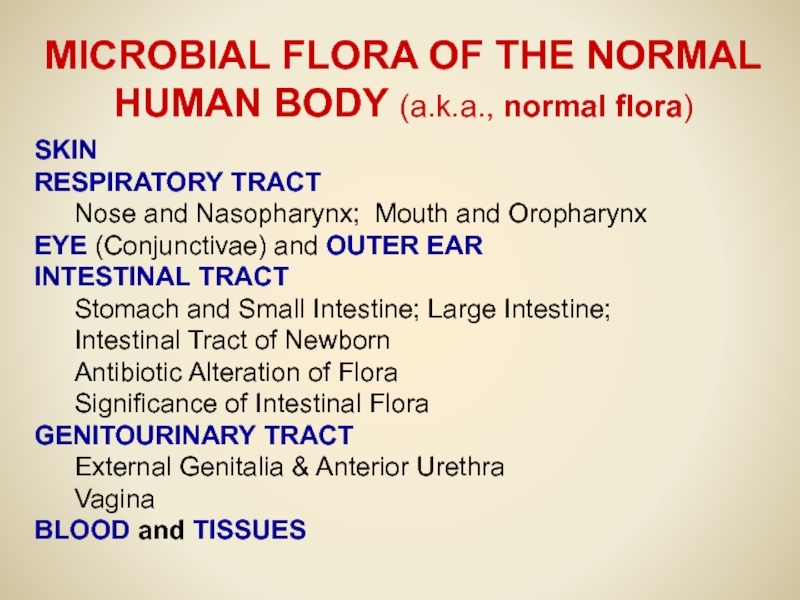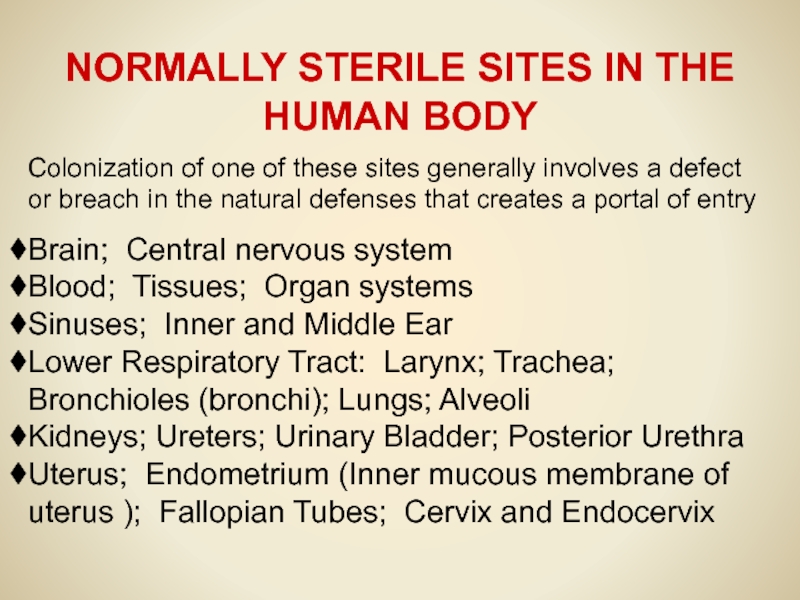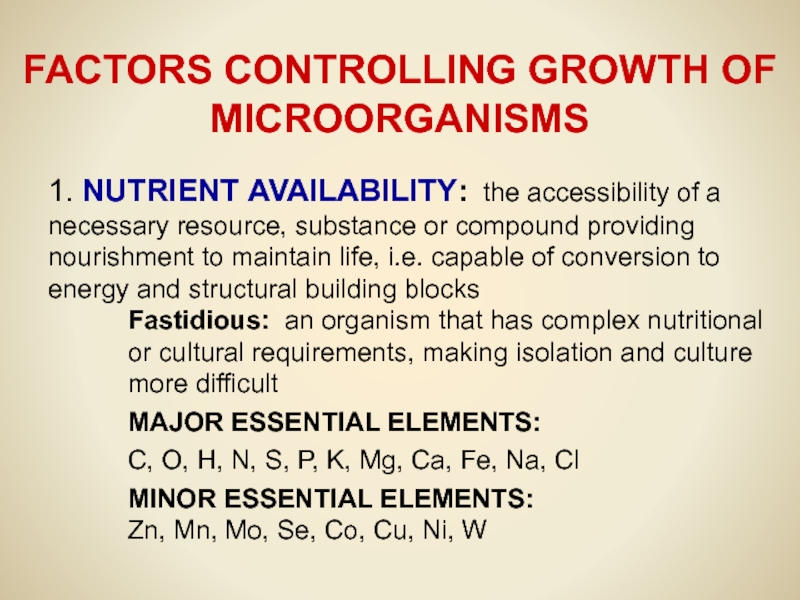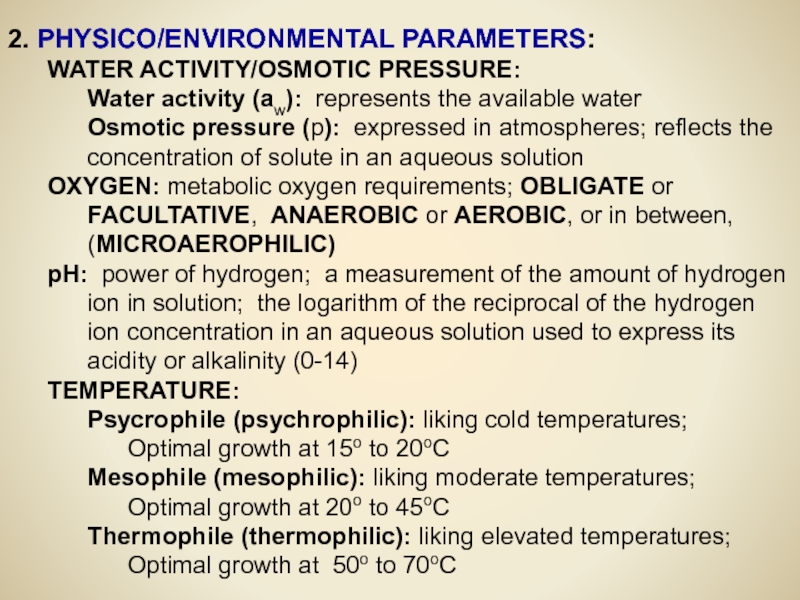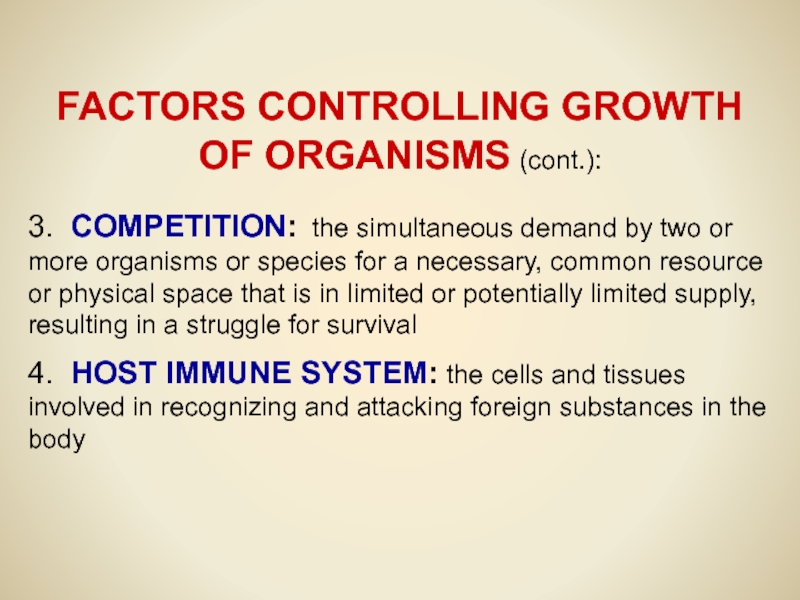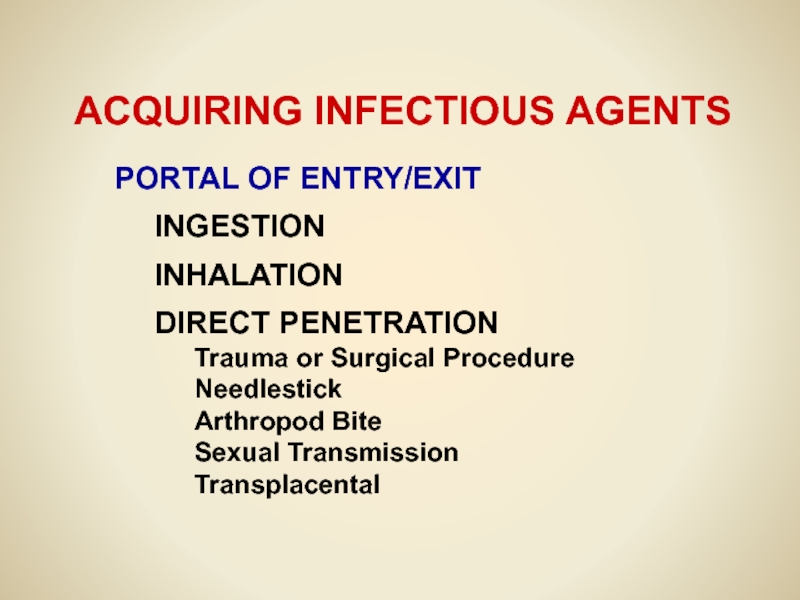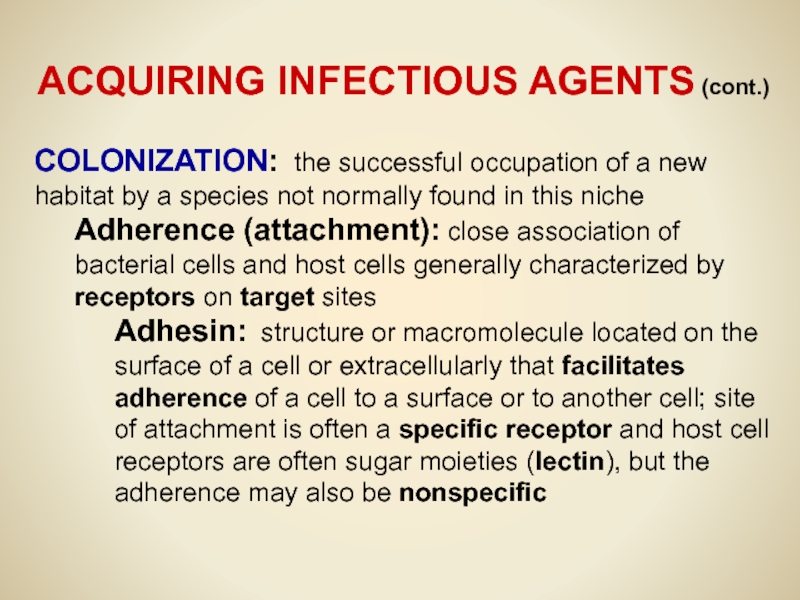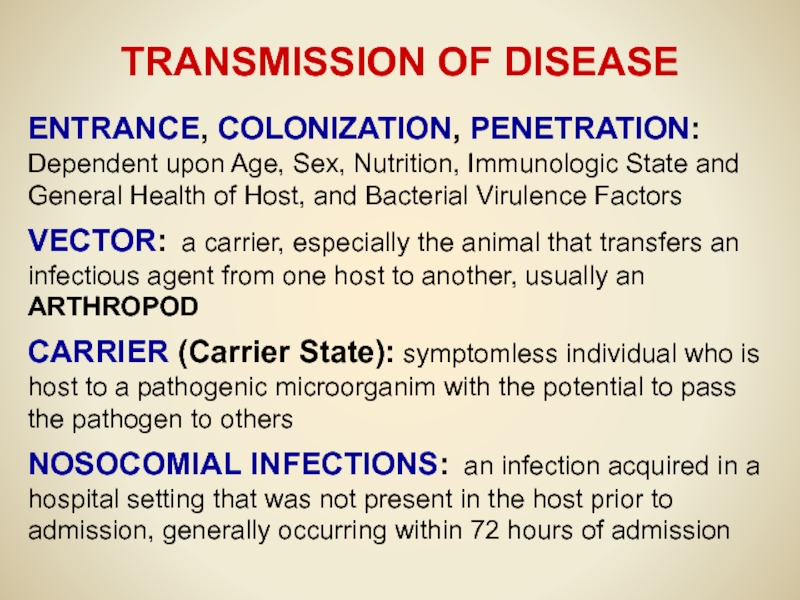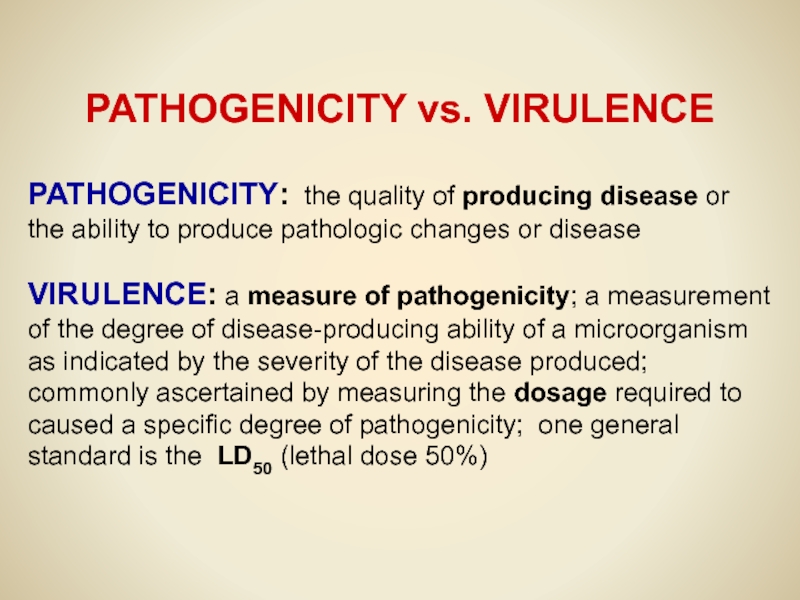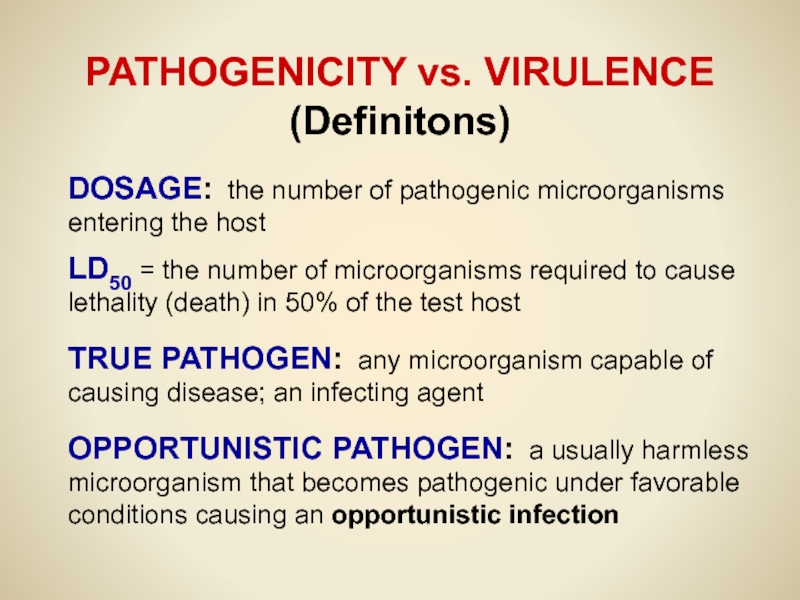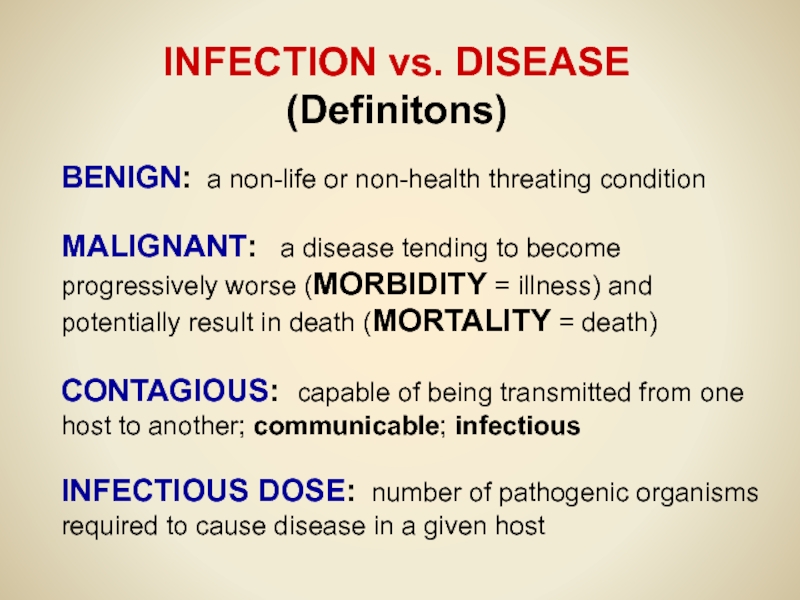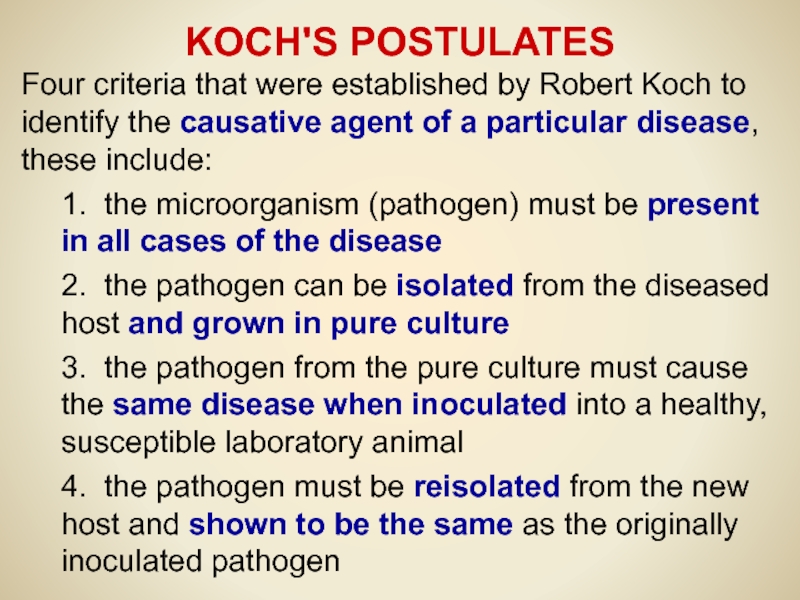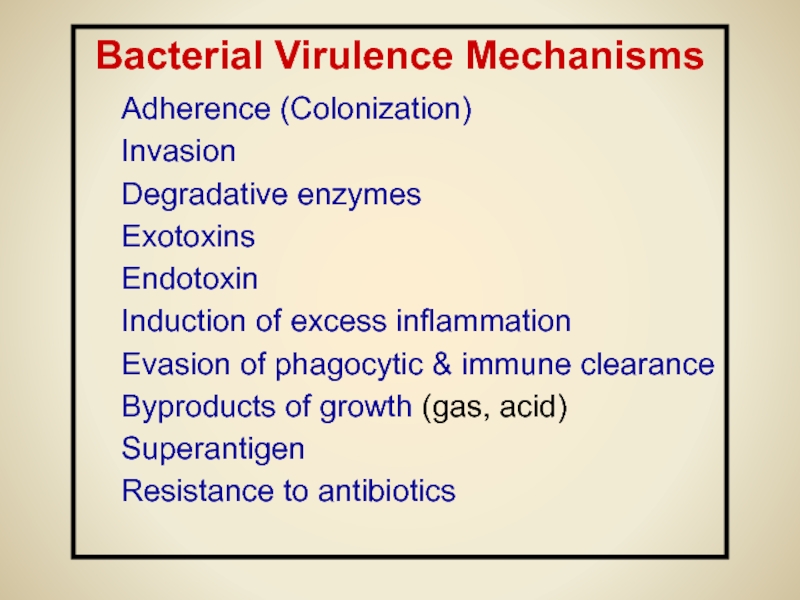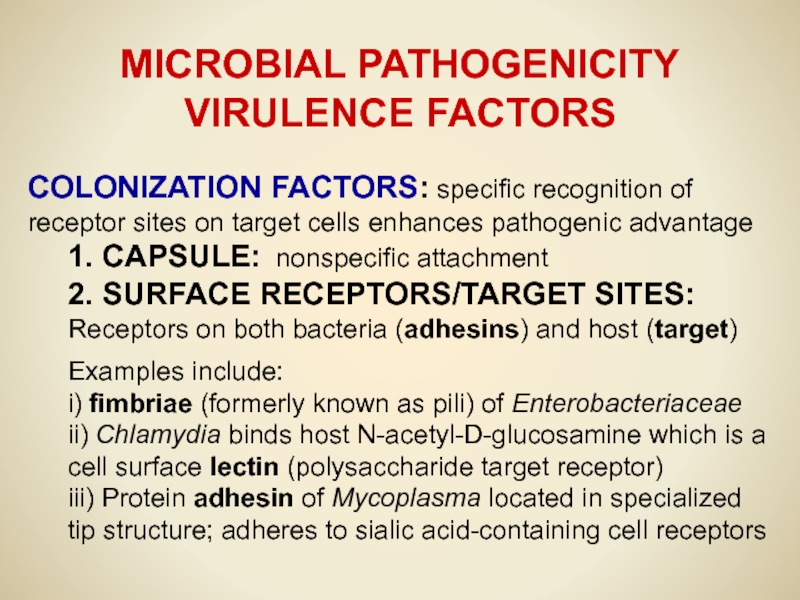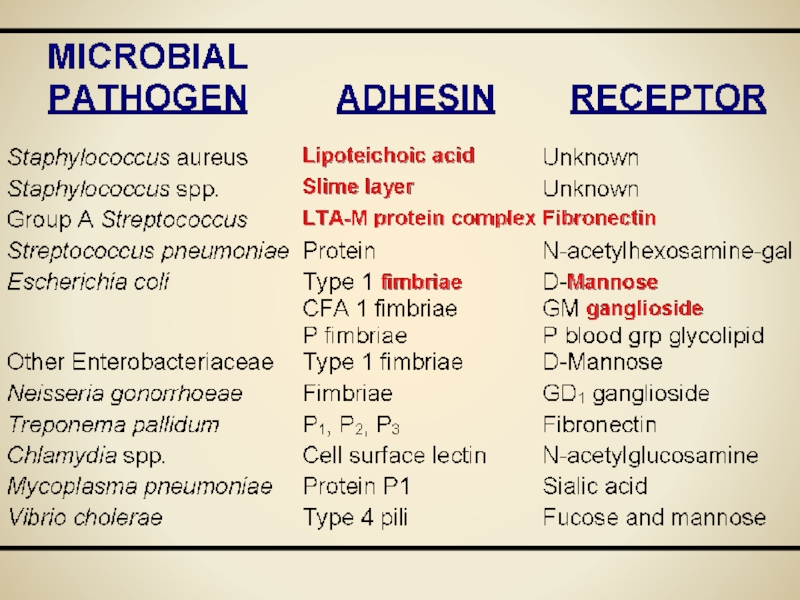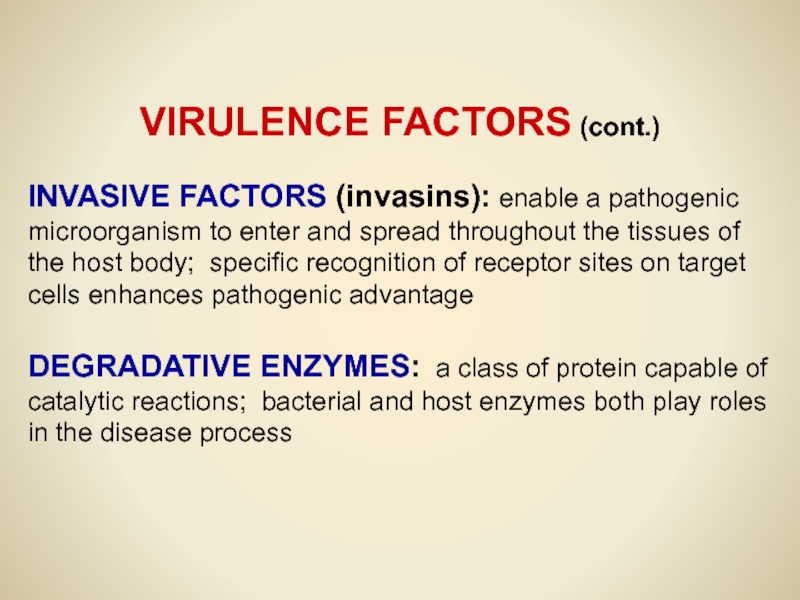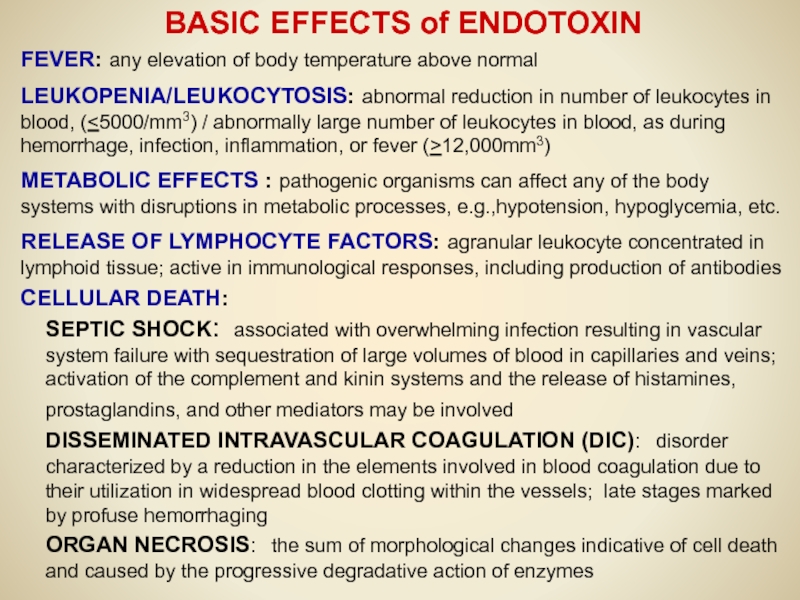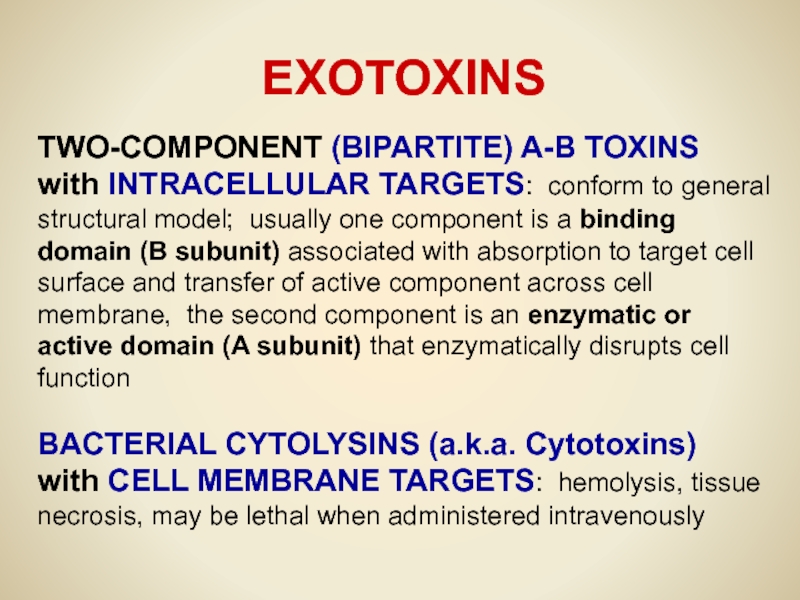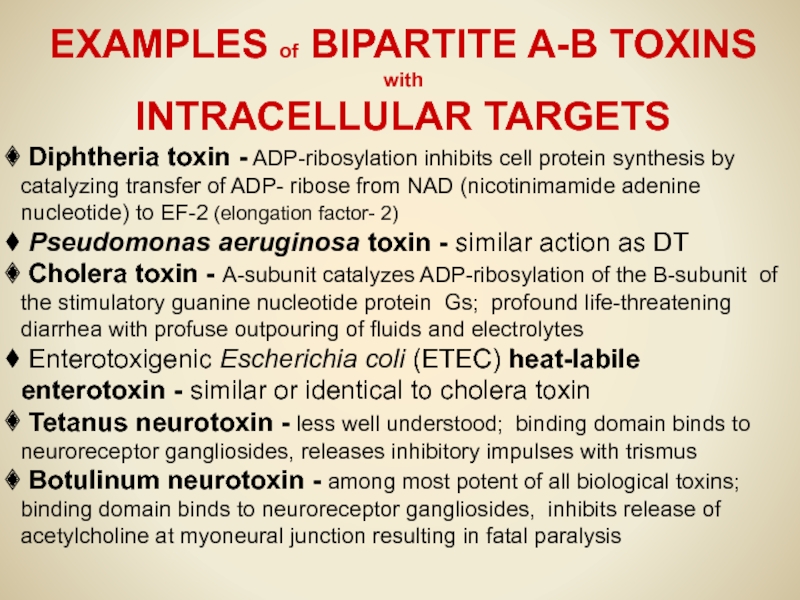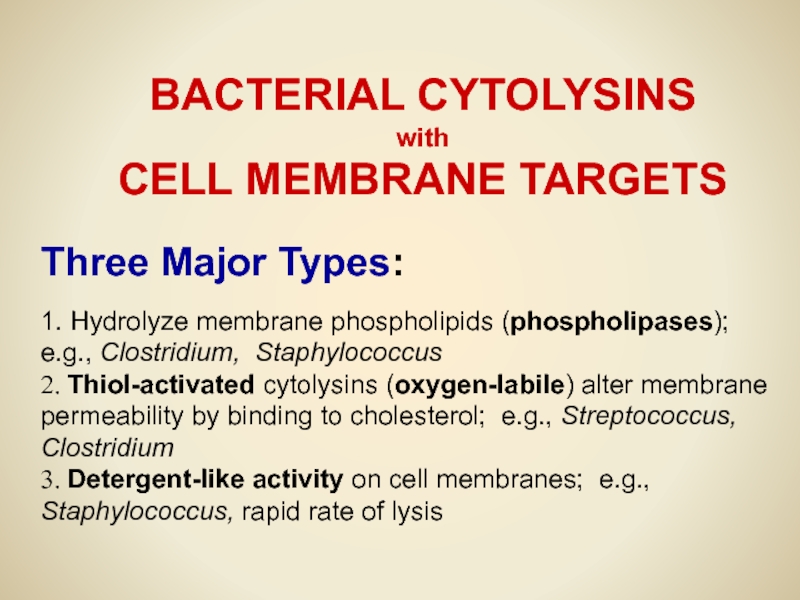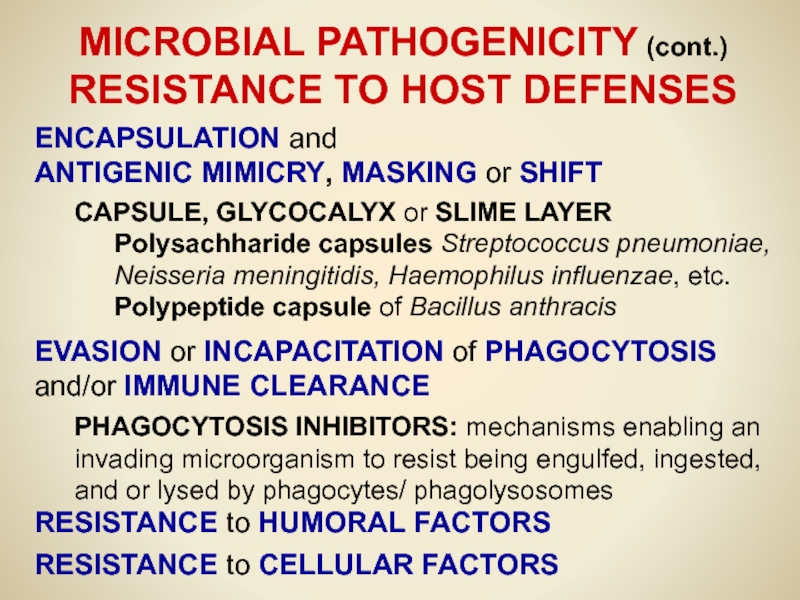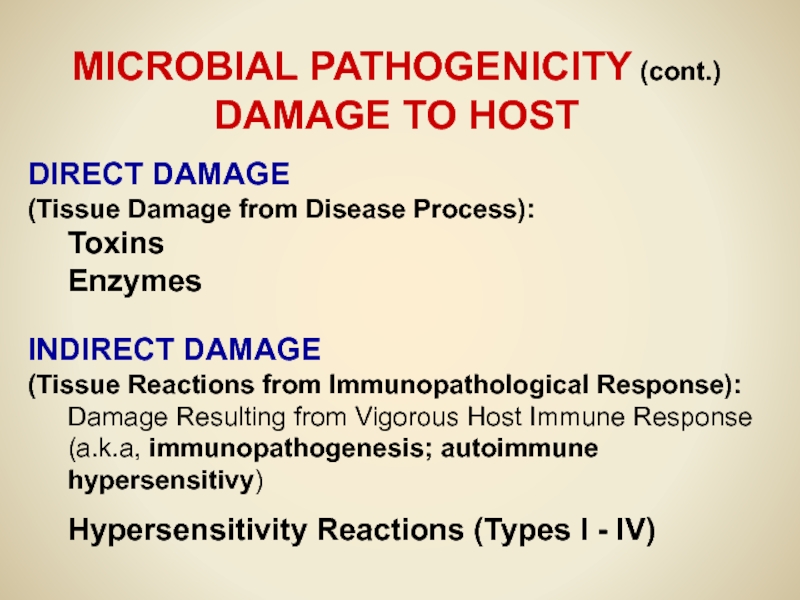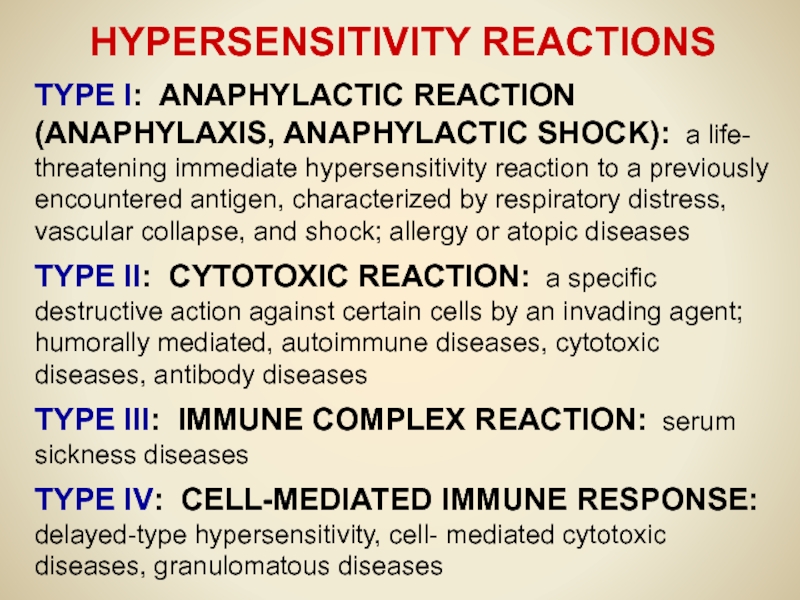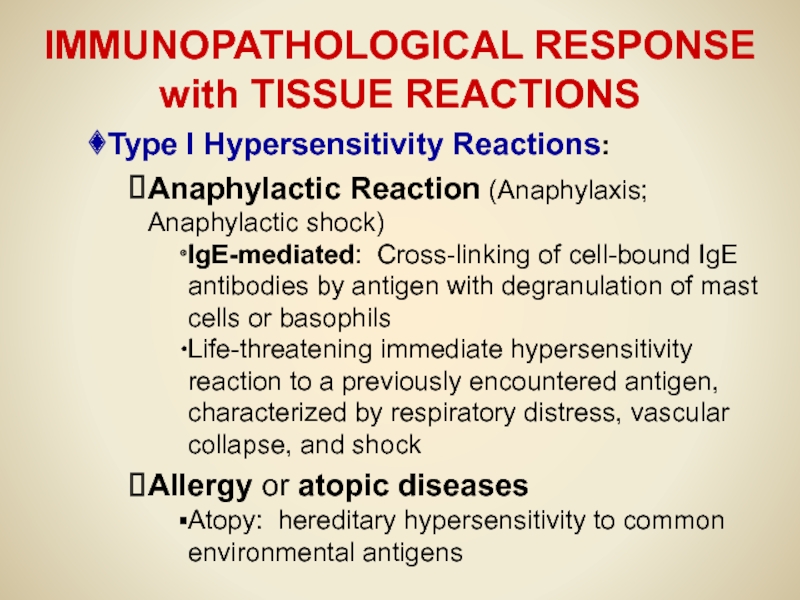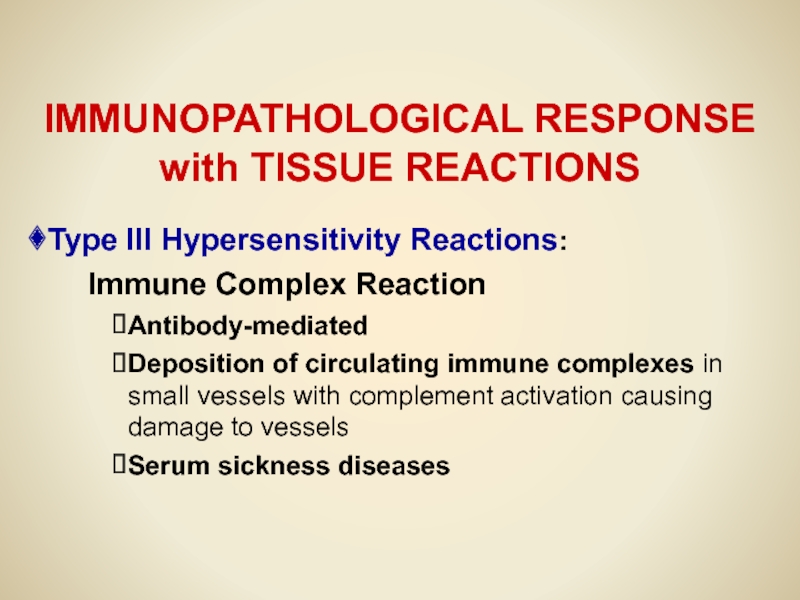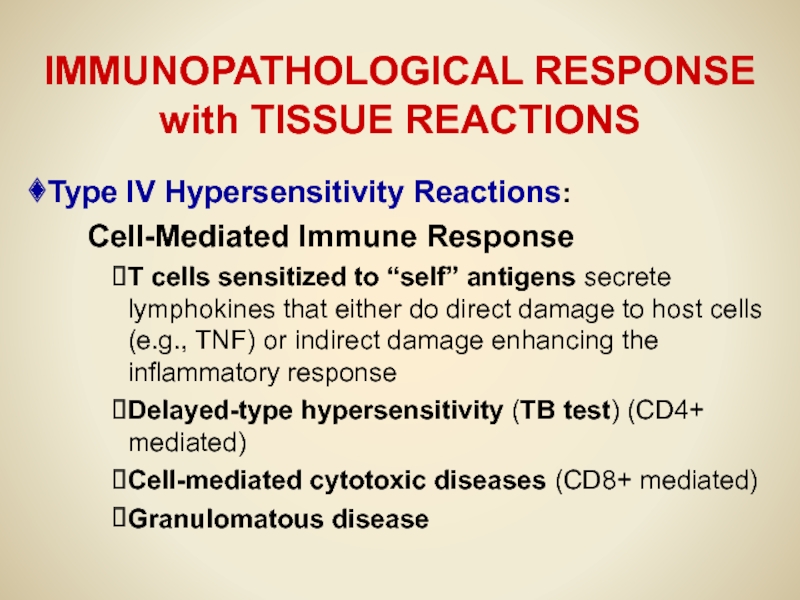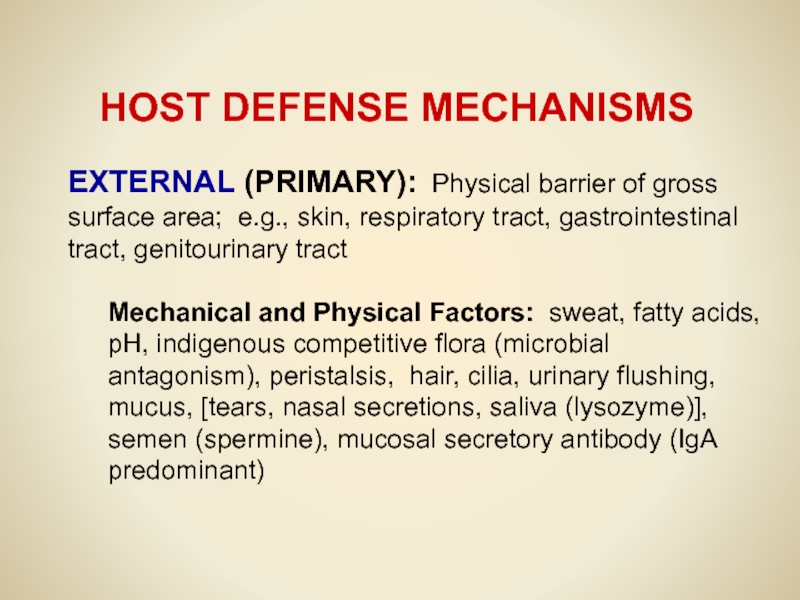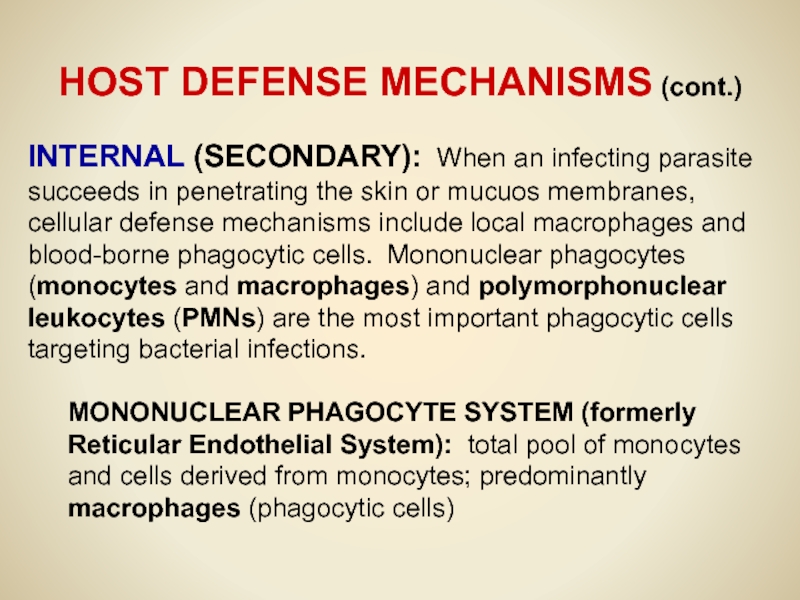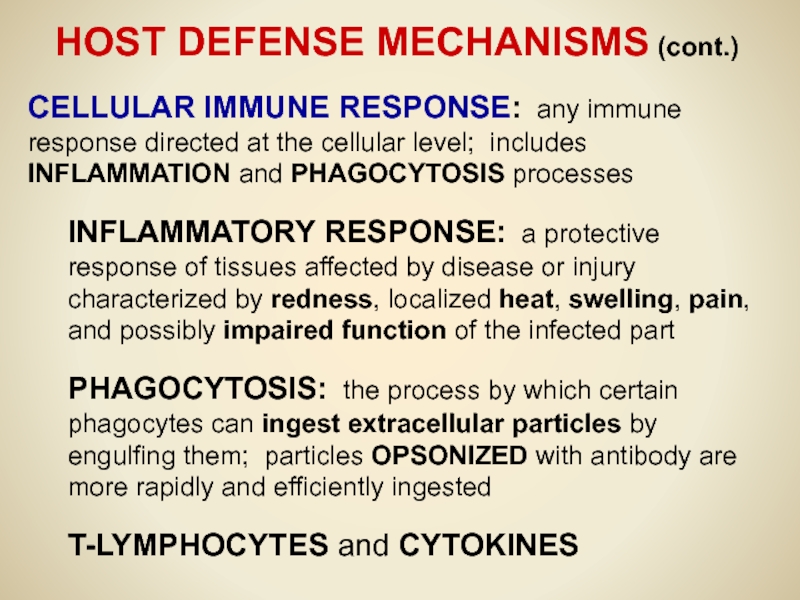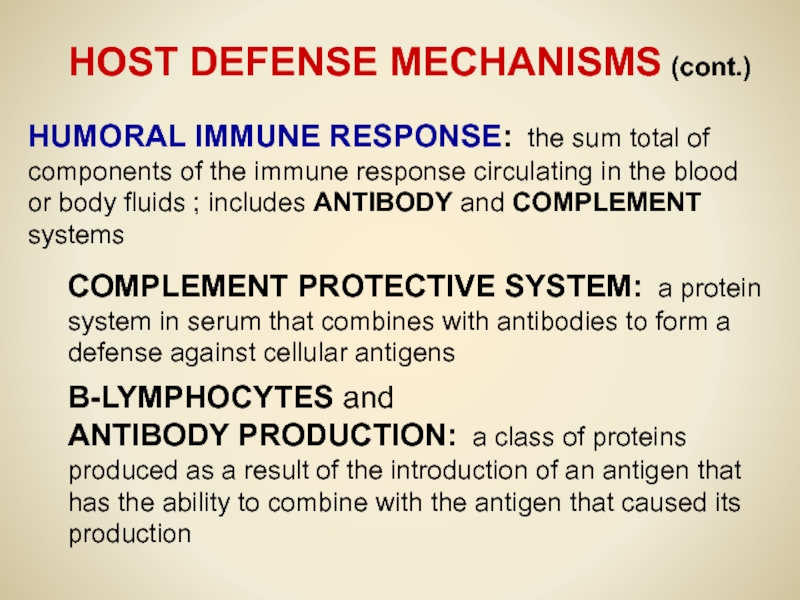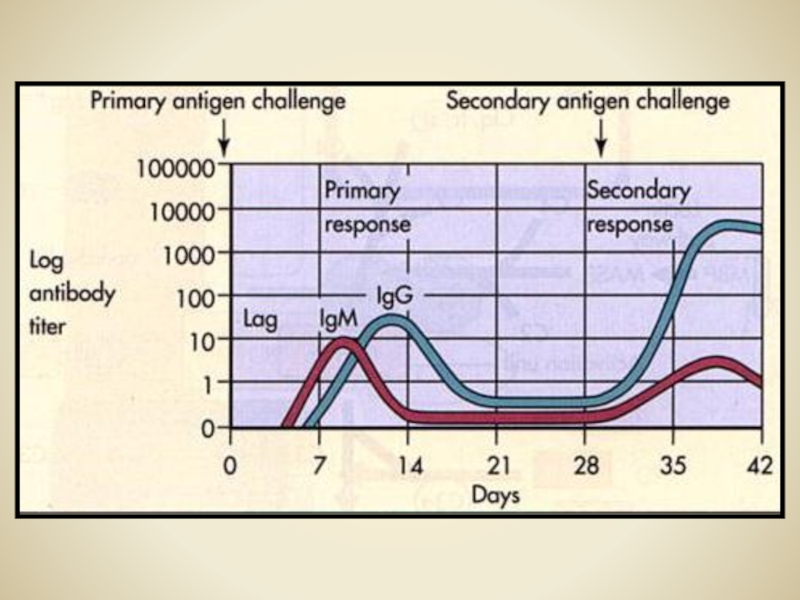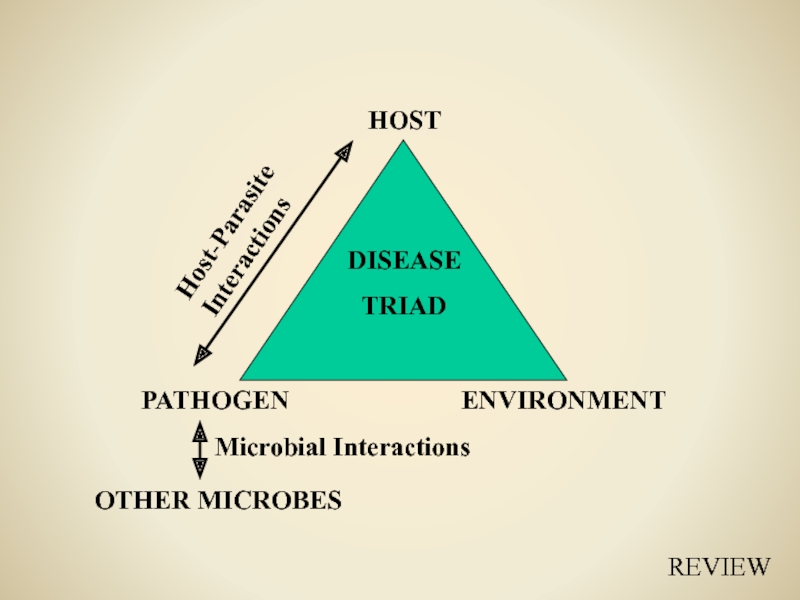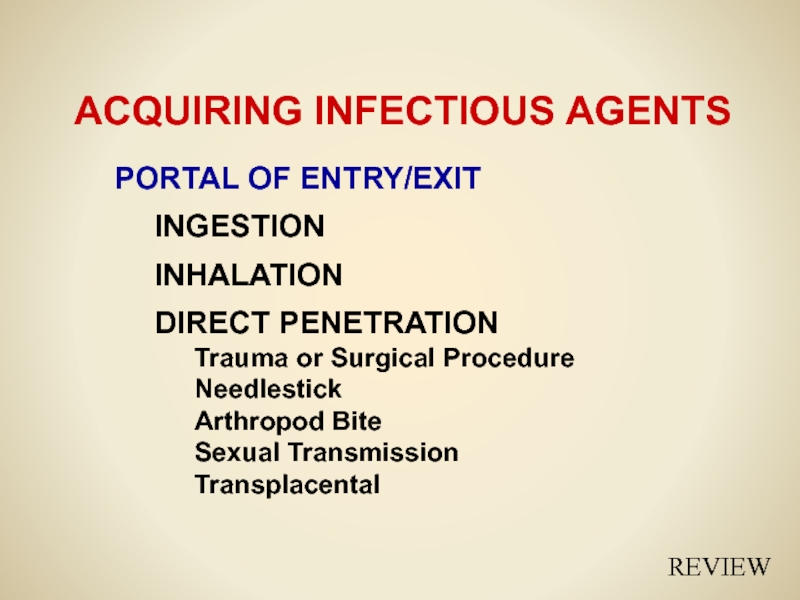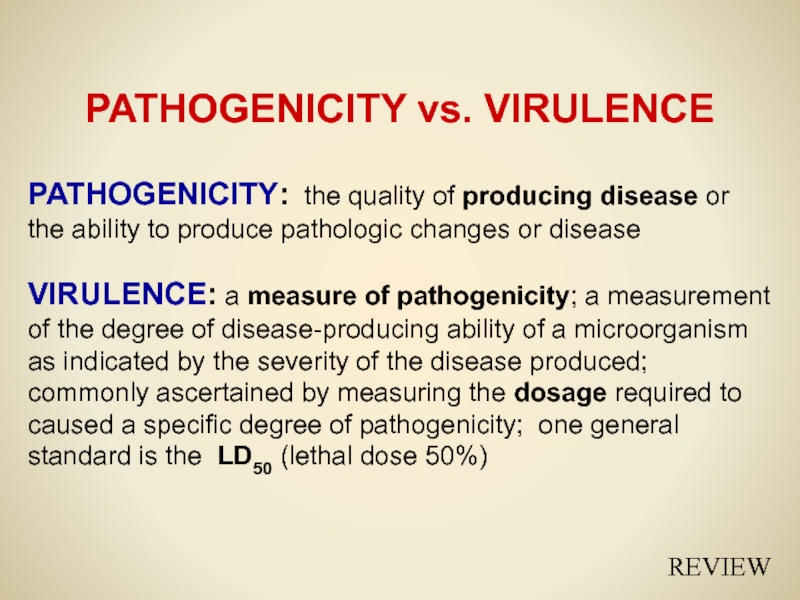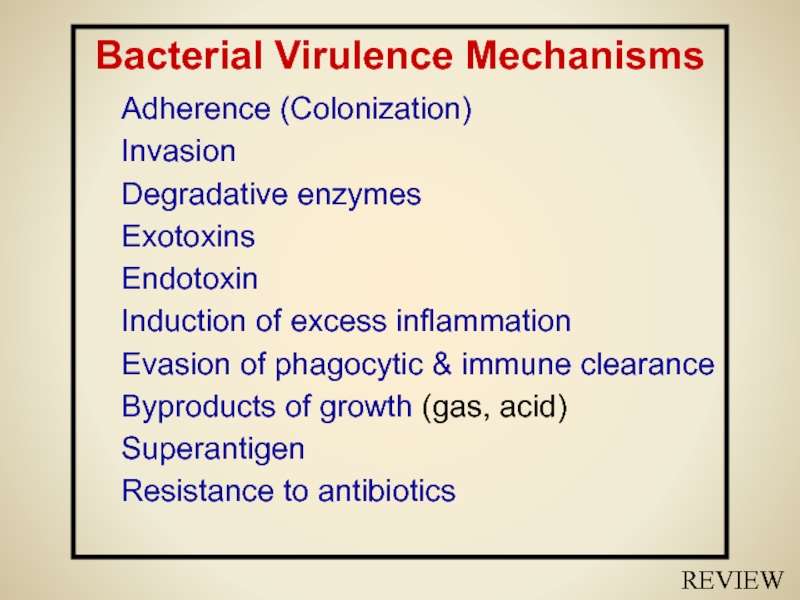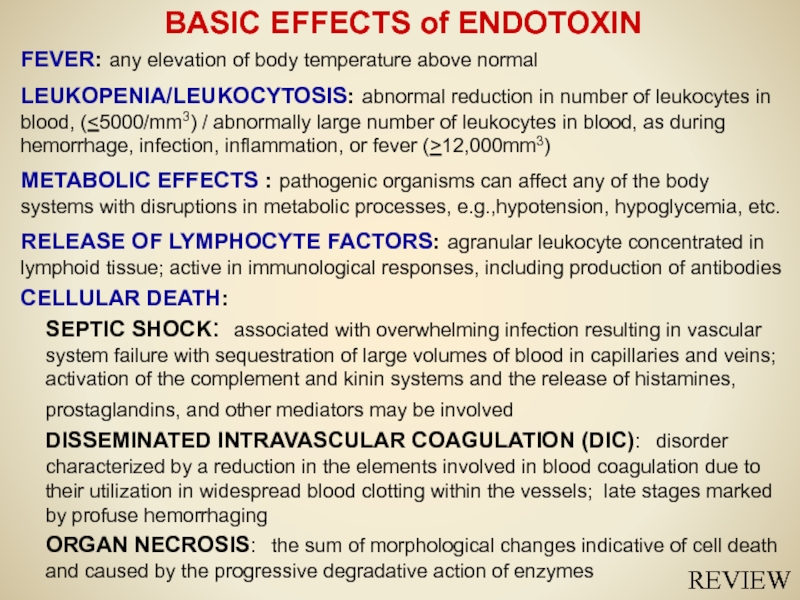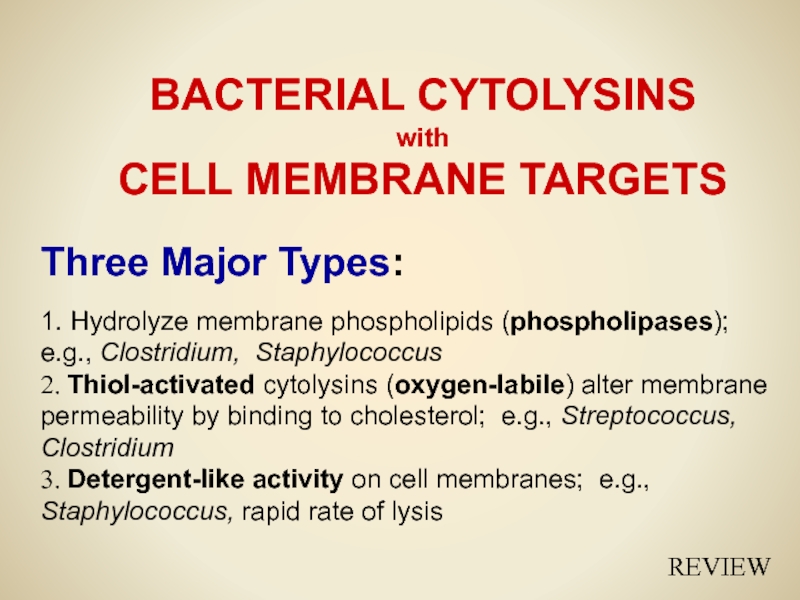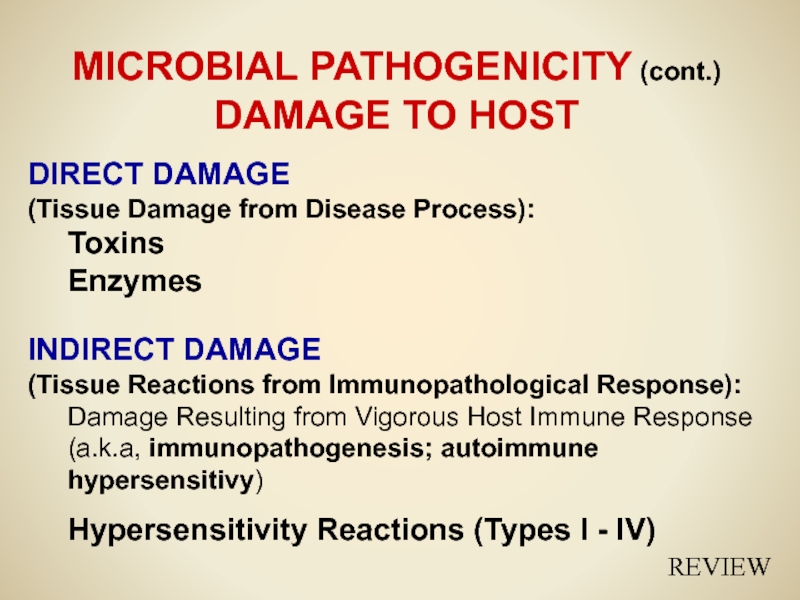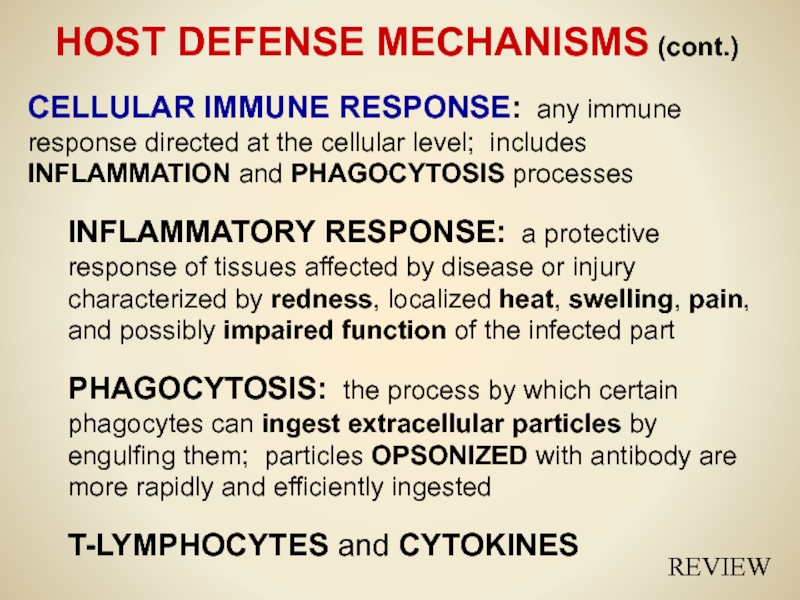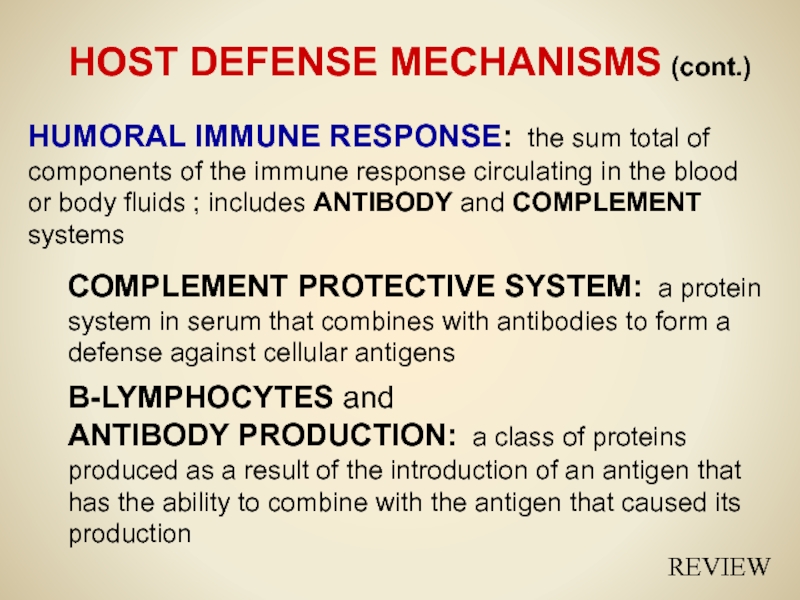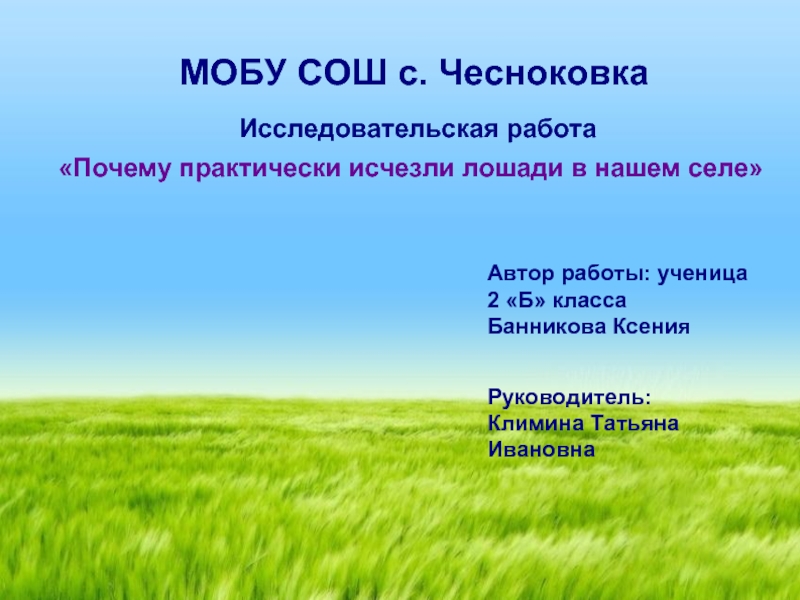- Главная
- Разное
- Дизайн
- Бизнес и предпринимательство
- Аналитика
- Образование
- Развлечения
- Красота и здоровье
- Финансы
- Государство
- Путешествия
- Спорт
- Недвижимость
- Армия
- Графика
- Культурология
- Еда и кулинария
- Лингвистика
- Английский язык
- Астрономия
- Алгебра
- Биология
- География
- Детские презентации
- Информатика
- История
- Литература
- Маркетинг
- Математика
- Медицина
- Менеджмент
- Музыка
- МХК
- Немецкий язык
- ОБЖ
- Обществознание
- Окружающий мир
- Педагогика
- Русский язык
- Технология
- Физика
- Философия
- Химия
- Шаблоны, картинки для презентаций
- Экология
- Экономика
- Юриспруденция
Host-parasite interactions презентация
Содержание
- 2. HOST-PARASITE INTERACTIONS
- 4. ECOLOGICAL RELATIONSHIPS Microbial Interactions Host-Parasite Interactions Environment
- 5. PATHOGEN ENVIRONMENT HOST DISEASE TRIAD Host-Parasite Interactions OTHER MICROBES Microbial Interactions
- 6. ECOLOGICAL RELATIONSHIPS SYMBIOSIS: neutral, antagonistic or
- 7. BASIC ECOLOGICAL DEFINITIONS FLORA; MICROBIOTA (Microbiology Definition):
- 8. NATURAL MICROBIAL HABITATS Soil Water Air Animals and Animal Products
- 9. MICROBIAL FLORA OF THE NORMAL HUMAN BODY
- 10. NORMALLY STERILE SITES IN THE HUMAN BODY
- 11. FACTORS CONTROLLING GROWTH OF MICROORGANISMS
- 12. 2. PHYSICO/ENVIRONMENTAL PARAMETERS: WATER ACTIVITY/OSMOTIC PRESSURE:
- 13. FACTORS CONTROLLING GROWTH OF ORGANISMS (cont.):
- 14. ACQUIRING INFECTIOUS AGENTS PORTAL OF ENTRY/EXIT
- 15. ACQUIRING INFECTIOUS AGENTS (cont.) COLONIZATION: the
- 16. ACQUIRING INFECTIOUS AGENTS (cont.) INVASION: the
- 17. TRANSMISSION OF DISEASE ENTRANCE, COLONIZATION, PENETRATION:
- 19. EPIDEMIOLOGY EPIDEMIC: disease occuring suddenly in
- 20. Tuberculosis SARS* Venezuelan Equine Encephalitis Hepatitis C
- 21. PATHOGENICITY vs. VIRULENCE PATHOGENICITY: the quality
- 22. PATHOGENICITY vs. VIRULENCE (Definitons) DOSAGE:
- 23. INFECTION vs. DISEASE INFECTION: the colonization
- 24. INFECTION vs. DISEASE (Definitons) BENIGN:
- 25. KOCH'S POSTULATES Four criteria that were established
- 26. Bacterial Virulence Mechanisms Adherence (Colonization)
- 27. MICROBIAL PATHOGENICITY VIRULENCE FACTORS COLONIZATION FACTORS:
- 29. VIRULENCE FACTORS (cont.) INVASIVE FACTORS (invasins):
- 30. VIRULENCE FACTORS (cont.) TOXIGENICITY: the ability
- 31. BASIC EFFECTS of ENDOTOXIN FEVER: any elevation
- 32. EXOTOXINS TWO-COMPONENT (BIPARTITE) A-B TOXINS with
- 33. EXAMPLES of BIPARTITE A-B TOXINS with INTRACELLULAR
- 34. BACTERIAL CYTOLYSINS with CELL MEMBRANE TARGETS
- 36. MICROBIAL PATHOGENICITY (cont.) RESISTANCE TO HOST
- 37. MICROBIAL PATHOGENICITY (cont.) DAMAGE TO HOST
- 39. HOST RESISTANCE The degree to which a
- 40. HYPERSENSITIVITY REACTIONS TYPE I: ANAPHYLACTIC REACTION
- 41. IMMUNOPATHOLOGICAL RESPONSE with TISSUE REACTIONS Type I
- 42. IMMUNOPATHOLOGICAL RESPONSE with TISSUE REACTIONS
- 43. IMMUNOPATHOLOGICAL RESPONSE with TISSUE REACTIONS Type
- 44. IMMUNOPATHOLOGICAL RESPONSE with TISSUE REACTIONS Type
- 45. HOST DEFENSE MECHANISMS EXTERNAL (PRIMARY): Physical
- 46. HOST DEFENSE MECHANISMS (cont.) INTERNAL (SECONDARY):
- 47. HOST DEFENSE MECHANISMS (cont.) OTHER:
- 48. HOST DEFENSE MECHANISMS (cont.) CELLULAR IMMUNE
- 49. HOST DEFENSE MECHANISMS (cont.) HUMORAL IMMUNE
- 53. REVIEW
- 54. PATHOGEN ENVIRONMENT HOST DISEASE TRIAD Host-Parasite Interactions OTHER MICROBES Microbial Interactions REVIEW
- 55. ACQUIRING INFECTIOUS AGENTS PORTAL OF ENTRY/EXIT
- 56. PATHOGENICITY vs. VIRULENCE PATHOGENICITY: the quality
- 57. INFECTION vs. DISEASE INFECTION: the colonization
- 58. KOCH'S POSTULATES Four criteria that were established
- 59. Bacterial Virulence Mechanisms Adherence (Colonization)
- 60. BASIC EFFECTS of ENDOTOXIN FEVER: any elevation
- 61. EXOTOXINS TWO-COMPONENT (BIPARTITE) A-B TOXINS with
- 62. BACTERIAL CYTOLYSINS with CELL MEMBRANE TARGETS
- 63. REVIEW
- 64. MICROBIAL PATHOGENICITY (cont.) RESISTANCE TO HOST
- 65. MICROBIAL PATHOGENICITY (cont.) DAMAGE TO HOST
- 66. HYPERSENSITIVITY REACTIONS TYPE I: ANAPHYLACTIC REACTION
- 67. HOST DEFENSE MECHANISMS (cont.) CELLULAR IMMUNE
- 68. HOST DEFENSE MECHANISMS (cont.) HUMORAL IMMUNE
Слайд 5
PATHOGEN
ENVIRONMENT
HOST
DISEASE
TRIAD
Host-Parasite Interactions
OTHER MICROBES
Microbial Interactions
Слайд 6ECOLOGICAL RELATIONSHIPS
SYMBIOSIS: neutral, antagonistic or synergistic relationship between two dissimilar organisms
MUTUALISM (+/+): mutually beneficial relationship between two species
COMMENSALISM (+/0): relationship between two species in which one is benefited and the other is not affected, neither negatively nor positively
PARASITISM (+/-): relationship between two species in which one benefits (parasite) from the other (host); usually involves detriment to the host
Слайд 7BASIC ECOLOGICAL DEFINITIONS
FLORA; MICROBIOTA (Microbiology Definition): microorganisms present in or characteristic
INDIGENOUS (Resident) MICROBIOTA: microbial flora typically occupying a particular niche; given diversity of environmental conditions, organisms tend to segregate
TRANSIENT FLORA: microbial flora only temporarily occupying a given niche
NICHE (ecological niche): the place of an organism within its community (ecosystem); unique position occupied by a particular species, perceived in terms of actual physical space occupied & function performed within ecosystem
Слайд 9MICROBIAL FLORA OF THE NORMAL HUMAN BODY (a.k.a., normal flora)
SKIN
RESPIRATORY TRACT
Nose
EYE (Conjunctivae) and OUTER EAR
INTESTINAL TRACT
Stomach and Small Intestine; Large Intestine;
Intestinal Tract of Newborn
Antibiotic Alteration of Flora
Significance of Intestinal Flora
GENITOURINARY TRACT
External Genitalia & Anterior Urethra
Vagina
BLOOD and TISSUES
Слайд 10NORMALLY STERILE SITES IN THE HUMAN BODY
Colonization of one of these
Brain; Central nervous system
Blood; Tissues; Organ systems
Sinuses; Inner and Middle Ear
Lower Respiratory Tract: Larynx; Trachea; Bronchioles (bronchi); Lungs; Alveoli
Kidneys; Ureters; Urinary Bladder; Posterior Urethra
Uterus; Endometrium (Inner mucous membrane of uterus ); Fallopian Tubes; Cervix and Endocervix
Слайд 11
FACTORS CONTROLLING GROWTH OF MICROORGANISMS
1. NUTRIENT AVAILABILITY: the accessibility of a
Fastidious: an organism that has complex nutritional or cultural requirements, making isolation and culture more difficult
MAJOR ESSENTIAL ELEMENTS:
C, O, H, N, S, P, K, Mg, Ca, Fe, Na, Cl
MINOR ESSENTIAL ELEMENTS:
Zn, Mn, Mo, Se, Co, Cu, Ni, W
Слайд 12
2. PHYSICO/ENVIRONMENTAL PARAMETERS:
WATER ACTIVITY/OSMOTIC PRESSURE:
Water activity (aw): represents the available water
Osmotic
OXYGEN: metabolic oxygen requirements; OBLIGATE or
FACULTATIVE, ANAEROBIC or AEROBIC, or in between, (MICROAEROPHILIC)
pH: power of hydrogen; a measurement of the amount of hydrogen
ion in solution; the logarithm of the reciprocal of the hydrogen ion concentration in an aqueous solution used to express its acidity or alkalinity (0-14)
TEMPERATURE:
Psycrophile (psychrophilic): liking cold temperatures;
Optimal growth at 15o to 20oC
Mesophile (mesophilic): liking moderate temperatures;
Optimal growth at 20o to 45oC
Thermophile (thermophilic): liking elevated temperatures;
Optimal growth at 50o to 70oC
Слайд 13FACTORS CONTROLLING GROWTH OF ORGANISMS (cont.):
3. COMPETITION: the simultaneous demand by
4. HOST IMMUNE SYSTEM: the cells and tissues involved in recognizing and attacking foreign substances in the body
Слайд 14ACQUIRING INFECTIOUS AGENTS
PORTAL OF ENTRY/EXIT
INGESTION
INHALATION
DIRECT PENETRATION
Trauma or Surgical Procedure
Needlestick
Arthropod Bite
Sexual Transmission
Transplacental
Слайд 15ACQUIRING INFECTIOUS AGENTS (cont.)
COLONIZATION: the successful occupation of a new habitat
Adherence (attachment): close association of bacterial cells and host cells generally characterized by receptors on target sites
Adhesin: structure or macromolecule located on the surface of a cell or extracellularly that facilitates adherence of a cell to a surface or to another cell; site of attachment is often a specific receptor and host cell receptors are often sugar moieties (lectin), but the adherence may also be nonspecific
Слайд 16ACQUIRING INFECTIOUS AGENTS (cont.)
INVASION: the entry and spread throughout the cells
Invasins (invasive factors): structures or macromolecules that facilitate invasion by a pathogenic microorganism
MULTIPLICATION: the ability of a microorganism to reproduce during an infection; influenced by underlying disease, immunologic status, antibiotic treatment, nutrient availability
Слайд 17TRANSMISSION OF DISEASE
ENTRANCE, COLONIZATION, PENETRATION: Dependent upon Age, Sex, Nutrition, Immunologic
VECTOR: a carrier, especially the animal that transfers an infectious agent from one host to another, usually an ARTHROPOD
CARRIER (Carrier State): symptomless individual who is host to a pathogenic microorganim with the potential to pass the pathogen to others
NOSOCOMIAL INFECTIONS: an infection acquired in a hospital setting that was not present in the host prior to admission, generally occurring within 72 hours of admission
Слайд 19EPIDEMIOLOGY
EPIDEMIC: disease occuring suddenly in numbers clearly
in access of normal
ENDEMIC: disease present or usually prevalent in a population or geographic area at all times
PANDEMIC: a widespread epidemic distributed or occuring widely throughout a region, country, continent, or globally
Слайд 20Tuberculosis SARS* Venezuelan Equine Encephalitis
Hepatitis C AIDS Enterohemorrhagic E. Coli
Malaria
Influenza Hantavirus Pulmonary Syndrome
Lyme Disease West Nile Fever/Encephalitis*
Emerging Infectious Diseases
New diseases and diseases with increasing incidences are called emerging infectious diseases (EIDs).
EIDs can result from the use of antibiotics and pesticides, climatic changes, travel, the lack of vaccination, and insufficient case reporting.
The CDC, NIH, and WHO are responsible for surveillance and responses to emerging infectious diseases.
Слайд 21PATHOGENICITY vs. VIRULENCE
PATHOGENICITY: the quality of producing disease or the ability
VIRULENCE: a measure of pathogenicity; a measurement of the degree of disease-producing ability of a microorganism as indicated by the severity of the disease produced; commonly ascertained by measuring the dosage required to caused a specific degree of pathogenicity; one general standard is the LD50 (lethal dose 50%)
Слайд 22PATHOGENICITY vs. VIRULENCE
(Definitons)
DOSAGE: the number of pathogenic microorganisms entering the
LD50 = the number of microorganisms required to cause lethality (death) in 50% of the test host
TRUE PATHOGEN: any microorganism capable of causing disease; an infecting agent
OPPORTUNISTIC PATHOGEN: a usually harmless microorganism that becomes pathogenic under favorable conditions causing an opportunistic infection
Слайд 23INFECTION vs. DISEASE
INFECTION: the colonization and/or invasion and multiplication of pathogenic
with or without the manifestation of disease
DISEASE: an abnormal condition of body function(s)
or structure that is considered to be harmful to the affected individual (host); any deviation from or interruption of the normal structure or function of any part, organ, or system
of the body
Слайд 24INFECTION vs. DISEASE
(Definitons)
BENIGN: a non-life or non-health threating condition
MALIGNANT:
CONTAGIOUS: capable of being transmitted from one host to another; communicable; infectious
INFECTIOUS DOSE: number of pathogenic organisms required to cause disease in a given host
Слайд 25KOCH'S POSTULATES
Four criteria that were established by Robert Koch to identify
1. the microorganism (pathogen) must be present in all cases of the disease
2. the pathogen can be isolated from the diseased host and grown in pure culture
3. the pathogen from the pure culture must cause the same disease when inoculated into a healthy, susceptible laboratory animal
4. the pathogen must be reisolated from the new host and shown to be the same as the originally inoculated pathogen
Слайд 26Bacterial Virulence Mechanisms
Adherence (Colonization)
Invasion
Degradative enzymes
Exotoxins
Endotoxin
Induction of excess inflammation
Evasion of phagocytic &
Byproducts of growth (gas, acid)
Superantigen
Resistance to antibiotics
Слайд 27MICROBIAL PATHOGENICITY
VIRULENCE FACTORS
COLONIZATION FACTORS: specific recognition of receptor sites on target
1. CAPSULE: nonspecific attachment
2. SURFACE RECEPTORS/TARGET SITES: Receptors on both bacteria (adhesins) and host (target)
Examples include:
i) fimbriae (formerly known as pili) of Enterobacteriaceae
ii) Chlamydia binds host N-acetyl-D-glucosamine which is a cell surface lectin (polysaccharide target receptor)
iii) Protein adhesin of Mycoplasma located in specialized tip structure; adheres to sialic acid-containing cell receptors
Слайд 29VIRULENCE FACTORS (cont.)
INVASIVE FACTORS (invasins): enable a pathogenic microorganism to enter
DEGRADATIVE ENZYMES: a class of protein capable of catalytic reactions; bacterial and host enzymes both play roles in the disease process
Слайд 30VIRULENCE FACTORS (cont.)
TOXIGENICITY: the ability of a microorganism to cause disease
1. ENDOTOXIN: a complex bacterial toxin that is composed of protein, lipid, and polysaccharide (LPS) which is released only upon lysis of the cell
2. EXOTOXINS: a potent toxic substance formed
and secreted by species of certain bacteria
Слайд 31BASIC EFFECTS of ENDOTOXIN
FEVER: any elevation of body temperature above normal
LEUKOPENIA/LEUKOCYTOSIS:
METABOLIC EFFECTS : pathogenic organisms can affect any of the body systems with disruptions in metabolic processes, e.g.,hypotension, hypoglycemia, etc.
RELEASE OF LYMPHOCYTE FACTORS: agranular leukocyte concentrated in lymphoid tissue; active in immunological responses, including production of antibodies
CELLULAR DEATH:
SEPTIC SHOCK: associated with overwhelming infection resulting in vascular system failure with sequestration of large volumes of blood in capillaries and veins; activation of the complement and kinin systems and the release of histamines, prostaglandins, and other mediators may be involved
DISSEMINATED INTRAVASCULAR COAGULATION (DIC): disorder characterized by a reduction in the elements involved in blood coagulation due to their utilization in widespread blood clotting within the vessels; late stages marked by profuse hemorrhaging
ORGAN NECROSIS: the sum of morphological changes indicative of cell death and caused by the progressive degradative action of enzymes
Слайд 32EXOTOXINS
TWO-COMPONENT (BIPARTITE) A-B TOXINS with INTRACELLULAR TARGETS: conform to general structural
BACTERIAL CYTOLYSINS (a.k.a. Cytotoxins)
with CELL MEMBRANE TARGETS: hemolysis, tissue necrosis, may be lethal when administered intravenously
Слайд 33EXAMPLES of BIPARTITE A-B TOXINS
with
INTRACELLULAR TARGETS
Diphtheria toxin - ADP-ribosylation inhibits
Pseudomonas aeruginosa toxin - similar action as DT
Cholera toxin - A-subunit catalyzes ADP-ribosylation of the B-subunit of the stimulatory guanine nucleotide protein Gs; profound life-threatening diarrhea with profuse outpouring of fluids and electrolytes
Enterotoxigenic Escherichia coli (ETEC) heat-labile enterotoxin - similar or identical to cholera toxin
Tetanus neurotoxin - less well understood; binding domain binds to neuroreceptor gangliosides, releases inhibitory impulses with trismus
Botulinum neurotoxin - among most potent of all biological toxins; binding domain binds to neuroreceptor gangliosides, inhibits release of acetylcholine at myoneural junction resulting in fatal paralysis
Слайд 34BACTERIAL CYTOLYSINS
with
CELL MEMBRANE TARGETS
Three Major Types:
1. Hydrolyze membrane phospholipids (phospholipases);
2. Thiol-activated cytolysins (oxygen-labile) alter membrane permeability by binding to cholesterol; e.g., Streptococcus, Clostridium
3. Detergent-like activity on cell membranes; e.g., Staphylococcus, rapid rate of lysis
Слайд 36
MICROBIAL PATHOGENICITY (cont.)
RESISTANCE TO HOST DEFENSES
ENCAPSULATION and
ANTIGENIC MIMICRY, MASKING or
CAPSULE, GLYCOCALYX or SLIME LAYER
Polysachharide capsules Streptococcus pneumoniae, Neisseria meningitidis, Haemophilus influenzae, etc.
Polypeptide capsule of Bacillus anthracis
EVASION or INCAPACITATION of PHAGOCYTOSIS and/or IMMUNE CLEARANCE
PHAGOCYTOSIS INHIBITORS: mechanisms enabling an invading microorganism to resist being engulfed, ingested, and or lysed by phagocytes/ phagolysosomes
RESISTANCE to HUMORAL FACTORS
RESISTANCE to CELLULAR FACTORS
Слайд 37MICROBIAL PATHOGENICITY (cont.)
DAMAGE TO HOST
DIRECT DAMAGE
(Tissue Damage from Disease Process):
Toxins
Enzymes
INDIRECT
(Tissue Reactions from Immunopathological Response):
Damage Resulting from Vigorous Host Immune Response (a.k.a, immunopathogenesis; autoimmune hypersensitivy)
Hypersensitivity Reactions (Types I - IV)
Слайд 39HOST RESISTANCE
The degree to which a host can limit the effects
TOLERANCE in which symptoms are suppressed or unusually large doses of a drug, toxin, or protein are able to be endured
HYPERSENSITIVITY in which only a few cells surrounding the infected cell(s) are affected or an increased susceptibility to an antigen, such as an allergic reaction to a previous exposure to an antigen, the extreme case being anaphylactic shock
IMMUNITY in which the microorganisms do not multiply due to any one or a combination of host immune factors or the biological condition by which a body is capable of resisting or overcoming an infection or disease
Слайд 40HYPERSENSITIVITY REACTIONS
TYPE I: ANAPHYLACTIC REACTION (ANAPHYLAXIS, ANAPHYLACTIC SHOCK): a life- threatening
TYPE II: CYTOTOXIC REACTION: a specific destructive action against certain cells by an invading agent; humorally mediated, autoimmune diseases, cytotoxic diseases, antibody diseases
TYPE III: IMMUNE COMPLEX REACTION: serum sickness diseases
TYPE IV: CELL-MEDIATED IMMUNE RESPONSE: delayed-type hypersensitivity, cell- mediated cytotoxic diseases, granulomatous diseases
Слайд 41IMMUNOPATHOLOGICAL RESPONSE with TISSUE REACTIONS
Type I Hypersensitivity Reactions:
Anaphylactic Reaction (Anaphylaxis;
IgE-mediated: Cross-linking of cell-bound IgE antibodies by antigen with degranulation of mast cells or basophils
Life-threatening immediate hypersensitivity reaction to a previously encountered antigen, characterized by respiratory distress, vascular collapse, and shock
Allergy or atopic diseases
Atopy: hereditary hypersensitivity to common environmental antigens
Слайд 42
IMMUNOPATHOLOGICAL RESPONSE with TISSUE REACTIONS
Type II Hypersensitivity Reactions:
Humorally-Mediated Autoimmune Diseases
Interaction
Cytotoxic reaction (antibody-mediated) (ADCC): Specific destructive action against certain cells presenting antigens from an invading agent
Слайд 43IMMUNOPATHOLOGICAL RESPONSE with TISSUE REACTIONS
Type III Hypersensitivity Reactions:
Immune Complex Reaction
Antibody-mediated
Deposition
Serum sickness diseases
Слайд 44IMMUNOPATHOLOGICAL RESPONSE with TISSUE REACTIONS
Type IV Hypersensitivity Reactions:
Cell-Mediated Immune Response
T
Delayed-type hypersensitivity (TB test) (CD4+ mediated)
Cell-mediated cytotoxic diseases (CD8+ mediated)
Granulomatous disease
Слайд 45HOST DEFENSE MECHANISMS
EXTERNAL (PRIMARY): Physical barrier of gross surface area; e.g.,
Mechanical and Physical Factors: sweat, fatty acids, pH, indigenous competitive flora (microbial antagonism), peristalsis, hair, cilia, urinary flushing, mucus, [tears, nasal secretions, saliva (lysozyme)], semen (spermine), mucosal secretory antibody (IgA predominant)
Слайд 46HOST DEFENSE MECHANISMS (cont.)
INTERNAL (SECONDARY): When an infecting parasite succeeds in
MONONUCLEAR PHAGOCYTE SYSTEM (formerly Reticular Endothelial System): total pool of monocytes and cells derived from monocytes; predominantly macrophages (phagocytic cells)
Слайд 47HOST DEFENSE MECHANISMS (cont.)
OTHER:
NON-SPECIFIC: oxygen metabolites (superoxide anion radical, hydrogen peroxide,
HOST-GENERATED PROTEINS: complex array of humoral and cellular mediators; e.g., lysosomal enzymes, lipid mediators, prostaglandins, histamine, heat-shock proteins (stress proteins)
Слайд 48HOST DEFENSE MECHANISMS (cont.)
CELLULAR IMMUNE RESPONSE: any immune response directed at
INFLAMMATORY RESPONSE: a protective response of tissues affected by disease or injury characterized by redness, localized heat, swelling, pain, and possibly impaired function of the infected part
PHAGOCYTOSIS: the process by which certain phagocytes can ingest extracellular particles by engulfing them; particles OPSONIZED with antibody are more rapidly and efficiently ingested
T-LYMPHOCYTES and CYTOKINES
Слайд 49HOST DEFENSE MECHANISMS (cont.)
HUMORAL IMMUNE RESPONSE: the sum total of components
COMPLEMENT PROTECTIVE SYSTEM: a protein system in serum that combines with antibodies to form a defense against cellular antigens
B-LYMPHOCYTES and
ANTIBODY PRODUCTION: a class of proteins produced as a result of the introduction of an antigen that has the ability to combine with the antigen that caused its production
Слайд 54
PATHOGEN
ENVIRONMENT
HOST
DISEASE
TRIAD
Host-Parasite Interactions
OTHER MICROBES
Microbial Interactions
REVIEW
Слайд 55ACQUIRING INFECTIOUS AGENTS
PORTAL OF ENTRY/EXIT
INGESTION
INHALATION
DIRECT PENETRATION
Trauma or Surgical Procedure
Needlestick
Arthropod Bite
Sexual Transmission
Transplacental
REVIEW
Слайд 56PATHOGENICITY vs. VIRULENCE
PATHOGENICITY: the quality of producing disease or the ability
VIRULENCE: a measure of pathogenicity; a measurement of the degree of disease-producing ability of a microorganism as indicated by the severity of the disease produced; commonly ascertained by measuring the dosage required to caused a specific degree of pathogenicity; one general standard is the LD50 (lethal dose 50%)
REVIEW
Слайд 57INFECTION vs. DISEASE
INFECTION: the colonization and/or invasion and multiplication of pathogenic
with or without the manifestation of disease
DISEASE: an abnormal condition of body function(s)
or structure that is considered to be harmful to the affected individual (host); any deviation from or interruption of the normal structure or function of any part, organ, or system
of the body
REVIEW
Слайд 58KOCH'S POSTULATES
Four criteria that were established by Robert Koch to identify
1. the microorganism (pathogen) must be present in all cases of the disease
2. the pathogen can be isolated from the diseased host and grown in pure culture
3. the pathogen from the pure culture must cause the same disease when inoculated into a healthy, susceptible laboratory animal
4. the pathogen must be reisolated from the new host and shown to be the same as the originally inoculated pathogen
REVIEW
Слайд 59Bacterial Virulence Mechanisms
Adherence (Colonization)
Invasion
Degradative enzymes
Exotoxins
Endotoxin
Induction of excess inflammation
Evasion of phagocytic &
Byproducts of growth (gas, acid)
Superantigen
Resistance to antibiotics
REVIEW
Слайд 60BASIC EFFECTS of ENDOTOXIN
FEVER: any elevation of body temperature above normal
LEUKOPENIA/LEUKOCYTOSIS:
METABOLIC EFFECTS : pathogenic organisms can affect any of the body systems with disruptions in metabolic processes, e.g.,hypotension, hypoglycemia, etc.
RELEASE OF LYMPHOCYTE FACTORS: agranular leukocyte concentrated in lymphoid tissue; active in immunological responses, including production of antibodies
CELLULAR DEATH:
SEPTIC SHOCK: associated with overwhelming infection resulting in vascular system failure with sequestration of large volumes of blood in capillaries and veins; activation of the complement and kinin systems and the release of histamines, prostaglandins, and other mediators may be involved
DISSEMINATED INTRAVASCULAR COAGULATION (DIC): disorder characterized by a reduction in the elements involved in blood coagulation due to their utilization in widespread blood clotting within the vessels; late stages marked by profuse hemorrhaging
ORGAN NECROSIS: the sum of morphological changes indicative of cell death and caused by the progressive degradative action of enzymes
REVIEW
Слайд 61EXOTOXINS
TWO-COMPONENT (BIPARTITE) A-B TOXINS with INTRACELLULAR TARGETS: conform to general structural
BACTERIAL CYTOLYSINS (a.k.a. Cytotoxins)
with CELL MEMBRANE TARGETS: hemolysis, tissue necrosis, may be lethal when administered intravenously
REVIEW
Слайд 62BACTERIAL CYTOLYSINS
with
CELL MEMBRANE TARGETS
Three Major Types:
1. Hydrolyze membrane phospholipids (phospholipases);
2. Thiol-activated cytolysins (oxygen-labile) alter membrane permeability by binding to cholesterol; e.g., Streptococcus, Clostridium
3. Detergent-like activity on cell membranes; e.g., Staphylococcus, rapid rate of lysis
REVIEW
Слайд 64
MICROBIAL PATHOGENICITY (cont.)
RESISTANCE TO HOST DEFENSES
ENCAPSULATION and
ANTIGENIC MIMICRY, MASKING or
CAPSULE, GLYCOCALYX or SLIME LAYER
Polysachharide capsules Streptococcus pneumoniae, Neisseria meningitidis, Haemophilus influenzae, etc.
Polypeptide capsule of Bacillus anthracis
EVASION or INCAPACITATION of PHAGOCYTOSIS and/or IMMUNE CLEARANCE
PHAGOCYTOSIS INHIBITORS: mechanisms enabling an invading microorganism to resist being engulfed, ingested, and or lysed by phagocytes/ phagolysosomes
RESISTANCE to HUMORAL FACTORS
RESISTANCE to CELLULAR FACTORS
REVIEW
Слайд 65MICROBIAL PATHOGENICITY (cont.)
DAMAGE TO HOST
DIRECT DAMAGE
(Tissue Damage from Disease Process):
Toxins
Enzymes
INDIRECT
(Tissue Reactions from Immunopathological Response):
Damage Resulting from Vigorous Host Immune Response (a.k.a, immunopathogenesis; autoimmune hypersensitivy)
Hypersensitivity Reactions (Types I - IV)
REVIEW
Слайд 66HYPERSENSITIVITY REACTIONS
TYPE I: ANAPHYLACTIC REACTION (ANAPHYLAXIS, ANAPHYLACTIC SHOCK): a life- threatening
TYPE II: CYTOTOXIC REACTION: a specific destructive action against certain cells by an invading agent; humorally mediated, autoimmune diseases, cytotoxic diseases, antibody diseases
TYPE III: IMMUNE COMPLEX REACTION: serum sickness diseases
TYPE IV: CELL-MEDIATED IMMUNE RESPONSE: delayed-type hypersensitivity, cell- mediated cytotoxic diseases, granulomatous diseases
REVIEW
Слайд 67HOST DEFENSE MECHANISMS (cont.)
CELLULAR IMMUNE RESPONSE: any immune response directed at
INFLAMMATORY RESPONSE: a protective response of tissues affected by disease or injury characterized by redness, localized heat, swelling, pain, and possibly impaired function of the infected part
PHAGOCYTOSIS: the process by which certain phagocytes can ingest extracellular particles by engulfing them; particles OPSONIZED with antibody are more rapidly and efficiently ingested
T-LYMPHOCYTES and CYTOKINES
REVIEW
Слайд 68HOST DEFENSE MECHANISMS (cont.)
HUMORAL IMMUNE RESPONSE: the sum total of components
COMPLEMENT PROTECTIVE SYSTEM: a protein system in serum that combines with antibodies to form a defense against cellular antigens
B-LYMPHOCYTES and
ANTIBODY PRODUCTION: a class of proteins produced as a result of the introduction of an antigen that has the ability to combine with the antigen that caused its production
REVIEW

